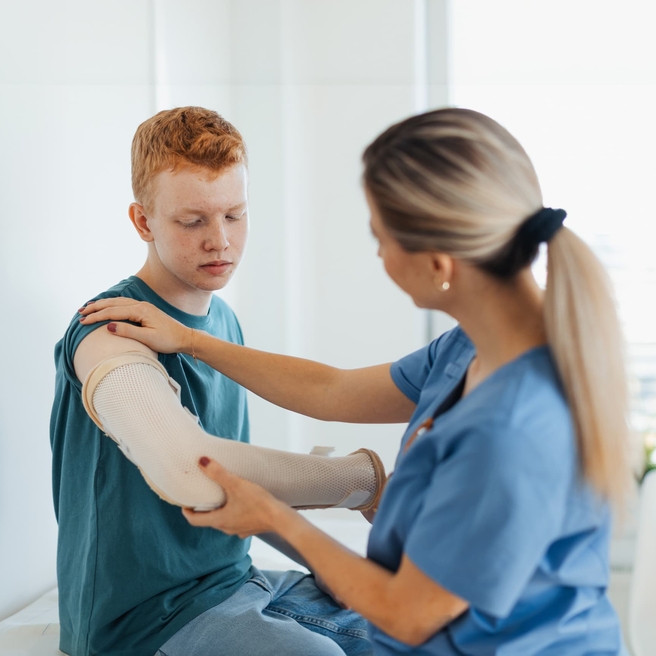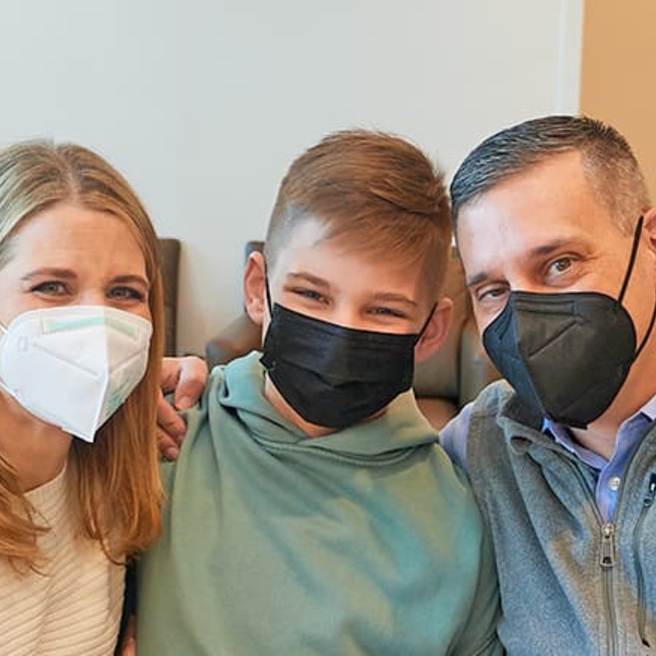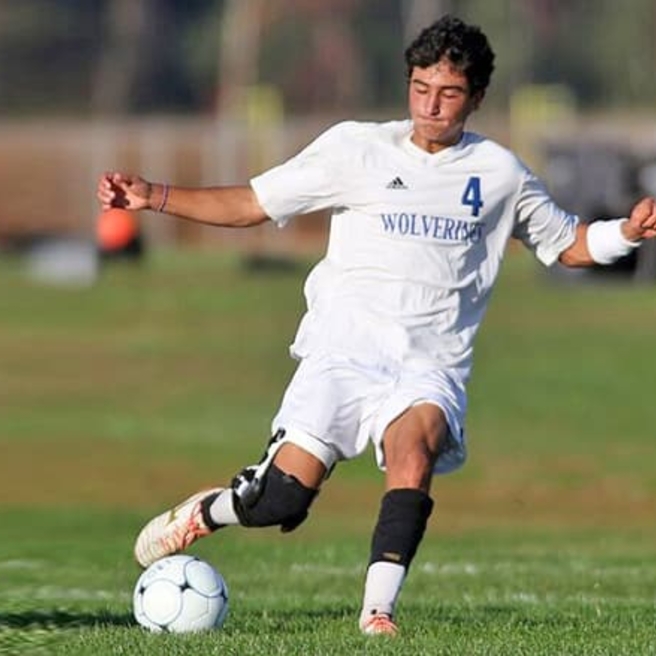What is the ACL and what are ACL injuries?
The anterior cruciate ligament (ACL) is one of the strong bands of fibrous tissue that connects the thigh bone (femur) to the shinbone (tibia) in the knee joint. When the ACL is injured or torn, it affects the knee’s stability and movement, making typical activities for active youth more difficult.
ACL sprains and ACL tears are among the most common knee injuries and can occur during childhood, adolescence and adulthood.
How do ACL injuries or tears happen?
Athletes in sports like football, soccer and basketball are more likely to suffer from serious ACL injuries. This is because these sports involve running, jumping and quickly changing directions. Some of these injuries require surgical treatment.
About half of all ACL injuries occur in combination with other knee injuries, such as meniscus tears, anterior knee pain (pain at the front and center of the knee) or damage to other structures of the knee such as cartilage and other ligaments.
Knee and anterior cruciate ligament (ACL) anatomy
The knee joint is at the intersection of three bones:
- Thigh bone (femur)
- Shinbone (tibia)
- Kneecap (patella)
The kneecap is positioned in front of the knee joint to provide protection for the four ligaments that connect the thighbone and shinbone and keep the knee stable.
Collateral ligaments are on both sides of the knee. The medial collateral ligament (MCL) is on the interior (the side next to the other leg). The lateral collateral ligament (LCL) is on the exterior of the knee. These ligaments control the sideways motion of the knee.
Cruciate ligaments in the knee form an “X” shape with the anterior cruciate ligament (ACL) in the front, and the posterior cruciate ligament (PCL) in the back. These ligaments control the back-and-forth motion of the knee. Additionally, the ACL provides stability to the knee and prevents the shin bone from moving in front of the thigh bone.
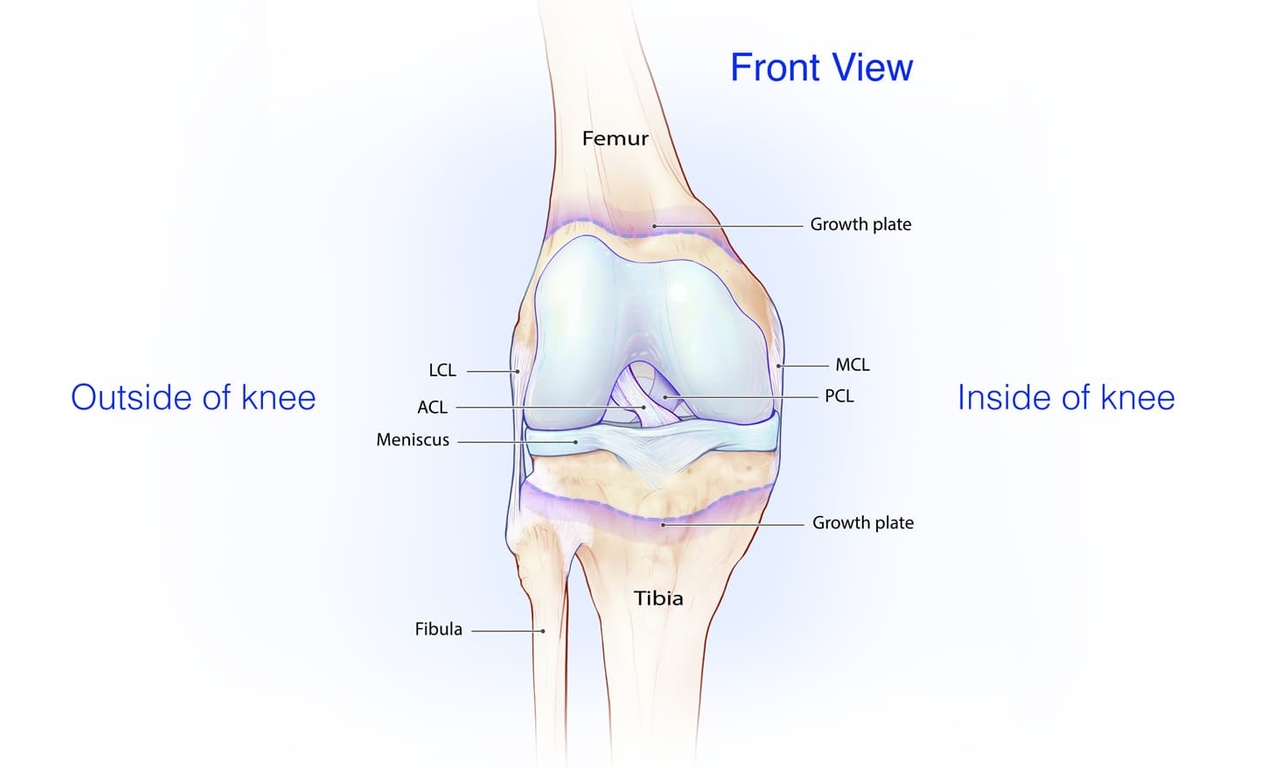
Types of ACL injuries
ACL injuries vary in severity.
- ACL Sprain (Grade 1): The ligament is damaged and stretched but can keep the knee stable.
- Partial ACL Tear (Grade 2): The ACL stretches and becomes loose. Doctors often refer to this type of ACL injury as a partial tear. This is not common.
- Complete ACL Tear/Complete Ligament Tear (Grade 3): The ACL is completely torn – split into two pieces, making the knee unstable.
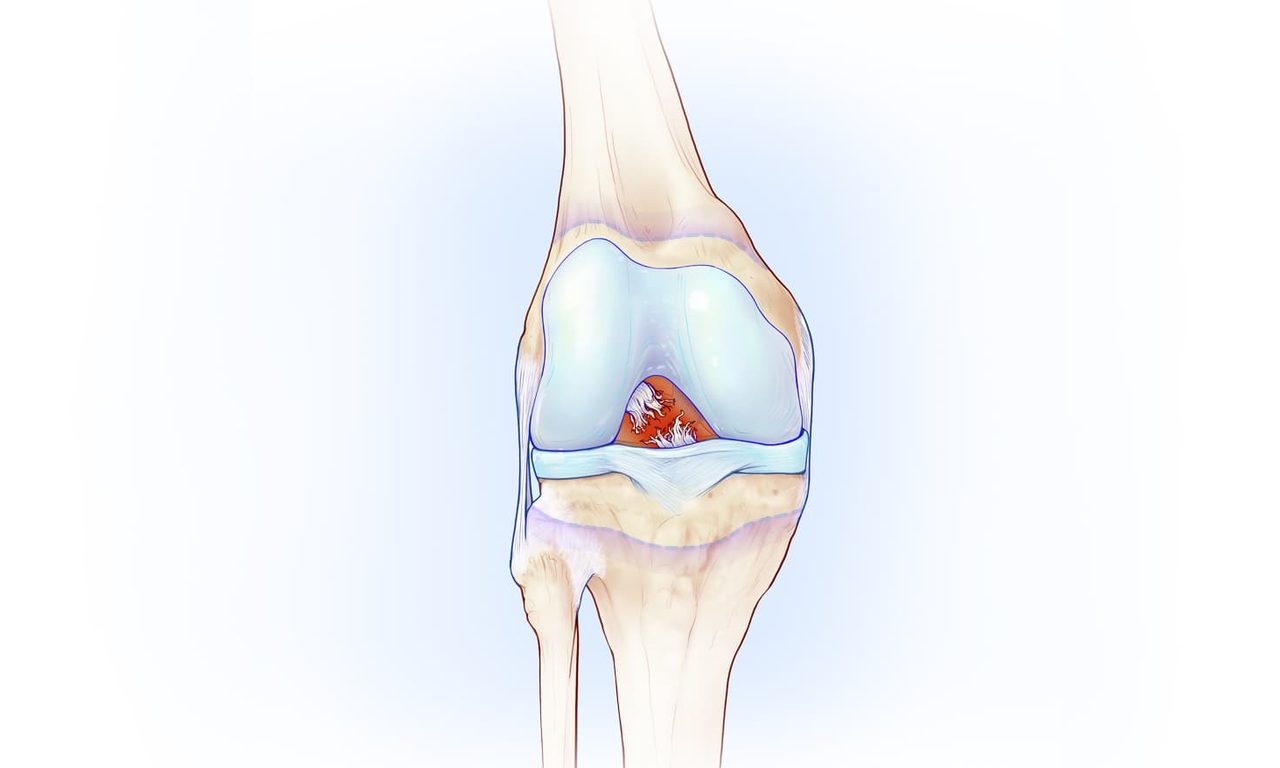
Causes of an ACL tear or injury
Various factors can cause ACL tears and injuries including:
- Stopping suddenly while running
- Slowing down while running
- Changing directions rapidly while running
- Jumping or landing incorrectly
- Contact injuries, such as a football tackle
- Overuse of the leg from repetitive impact activity — such as jumping, running, twisting or pivoting
Risk factors for an ACL tear
How do ACL tears happen? While ACL tears in children are not that common compared to all other injuries children suffer, they do occur more often in:
- Females, because of differences in anatomy, muscle strength and hormone differences
- Youth who are especially active
- Youth who participate in sports that require a lot of running, jumping, twisting or pivoting, like football, soccer, basketball, gymnastics, lacrosse and downhill skiing
- Youth who don’t warm up properly, or who use incorrect movement patterns
- Youth who wear footwear that doesn’t fit properly
- Youth who use poorly maintained sports equipment
Recent studies at Children’s Hospital of Philadelphia and elsewhere have shown that ACL injuries in children and adolescents are on the rise.
Symptoms of an ACL injury
How does an ACL tear feel? Signs and symptoms of an ACL tear or injury may include:
- Hearing a popping sound
- Weakness or feeling as if their knee has given out from under them
- Immediate pain, especially when you put weight on your injured leg
- Swelling, especially for the first 24 hours after the injury
- Being unable to continue playing immediately after the injury
- Losing full range of motion
- Joint pain and tenderness
- Discomfort while walking
When to seek ACL injury care
If your child injures their knee, has any symptoms of an ACL injury, or their knee pain is getting worse, you should visit a healthcare provider as soon as possible. A prompt and accurate diagnosis is needed to determine the severity of the injury and plan appropriate treatment. When an ACL tear or injury disrupts the knee’s typical function, treatment is almost always needed.
ACL injury prevention
ACL injury prevention requires a coordinated approach from athletes, coaches and parents. It’s especially important to get buy-in from youth athletes who are still learning their limits and may be tempted to push themselves too far.
While youth athletes may not be able to prevent all ACL tears, there are some things they can do to better prepare for competition and reduce their risk of injury.
How to prevent ACL injury:
- Don’t play through the pain: If your knee hurts during or after physical activity – take time to rest
- Practice exercises that strengthen leg muscles – particularly the hamstring in the thigh – to ensure balance in muscle strength in both legs
- Practice exercises that strengthen the body’s core (hips, pelvis, abdomen) to avoid the knee moving inward
- Exercise using proper technique and knee positioning when jumping and landing, as well as pivoting and cutting to quickly change directions
- Avoid planting your foot, then twisting the knee to pivot
- Perform warm-up exercises before sports
- Practice cool-down stretches after sports
- Rest after intense physical activity
- Wear properly fitted shoes
- Use protective equipment
Training programs like CHOP’s Ready. Set. Prevent. provide athletes and coaches with a variety of ACL injury prevention exercises.
Testing and diagnosis of ACL injury or ACL tear
At Children's Hospital of Philadelphia (CHOP), ACL injuries are treated by physicians from the Orthopedic Center and the Sports Medicine and Performance Center who specialize in diagnosing and treating bone and muscle injuries in children, teens and young adults.
Our expert doctors will perform a physical exam of your child, specifically addressing all structures of the injured knee, and comparing them to the non-injured knee.
We will assess your child’s pain level and ask questions about their medical history. Additionally, we may perform imaging tests including X-rays and MRIs. These tests help us understand your child’s condition and the severity of their injury.
Then, we will work with you and your child to develop an individualized treatment plan.
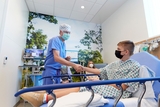
Why choose CHOP
We have more specially trained sports medicine physicians, orthopedic surgeons, physical therapists and athletic trainers than any other pediatric orthopedic facility in the region.
Treatments for ACL injury
Treatment for your child’s ACL injury will depend on many factors, including your child’s age and development, the severity of the injury, and long-term lifestyle goals.
For example, an elite young athlete may require surgery to safely resume sports. Non-surgical treatment may be recommended for growing patients with less severe injuries.
Non-surgical treatment options for ACL injuries
If the overall stability of your child’s knee is intact (like an ACL sprain/Grade 1 injury) and your child still has open growth plates, orthopedic physicians at CHOP will likely recommend non-surgical treatment.
Growth plates are areas of cartilage (fibrous tissue) at the end of long bones in the body (such as the arms and legs). As your child grows, these areas continue to slowly lengthen. When growth is complete, the cartilage hardens into bone.
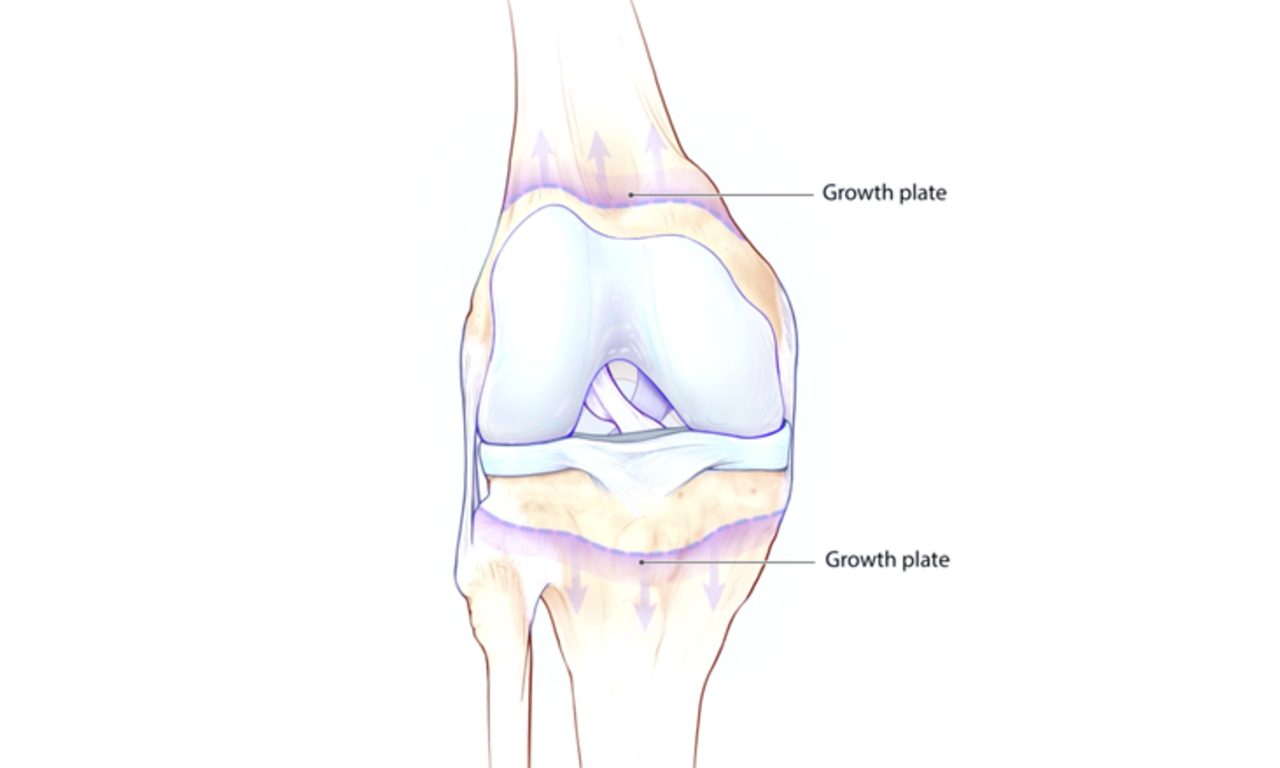
Options include:
- Activity modification: This includes avoiding sports such as soccer and football, which involve "cutting" activities such as jumping, pivoting, and twisting
- Knee brace: Doctors may recommend immobilizing the knee with a brace
- Physical therapy and rehabilitation: After swelling goes down, specific ACL injury prevention exercises can strengthen the leg muscles and help restore knee function
Reconstruction surgery for a torn ACL
A torn ACL will not heal without surgery because there is no blood supply to the ligament. Standard treatment involves surgery to reconstruct or replace the torn ACL.
Learn more about having ACL surgery at Children’s Hospital of Philadelphia and why where you seek treatment matters.
Follow-up care and rehabilitation from ACL injury
Rehabilitation is vital for recovery after an ACL injury in children or teens — even if your child did not have surgery. Physical therapy will help your child regain strength and motion in their knee and leg, as well as teach them ACL injury self-care.
If your child had surgery, rehabilitation will initially focus on returning motion to the knee and leg muscles. Next, your child will join a program to make the new ligament stronger by slowly adding more pressure to it. Finally, your child will take part in a customized program designed to optimize return to their chosen sport.
Regrowth of the ACL takes time. It’s important to help your child have realistic expectations about their recovery. ACL injury recovery time could take more than 6-9 months for an athlete to return to sports after surgery. Explore CHOP’s approach to care for ACL surgery recovery and how we can support you.
The CHOP ACL experience and patient stories
Our patients and families tell us they choose CHOP for ACL injury care based on our top-ranked sports medicine and orthopedic programs, our highly skilled and dedicated staff, and our commitment to treating the whole child – not just their injury.
Families come to CHOP confident their child will receive the best care from the #1 ranked pediatric orthopedic program in the nation, according to U.S. News & World Report’s 2024-25 Honor Roll of Best Children’s Hospitals.
Read about our patients’ experience with ACL injury treatment at CHOP
Resources to help
ACL tear and injury in children and teens Resources
Sports Medicine and Performance Center Resources
We have created resources—including patient and family educational materials, videos, and more—to help you find answers to your questions and feel confident about the care you are providing your child.
